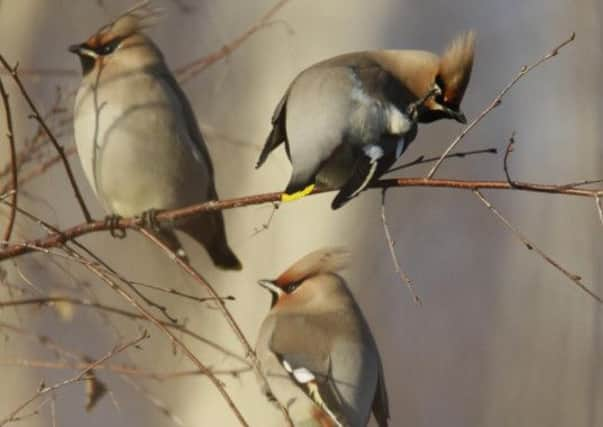Twitter to be key in RSPB Birdwatch survey


Recently, a friend of mine moved into a new house. She’d been renting a flat on the same street for a few years so she knows the area well and likes it. The new house was everything she hoped for – more space, a cellar for storage and a small front garden complete with bird table.
“There are no birds,” she said disconsolately. None? I asked, not quite believing her.
Advertisement
Hide Ad“None. The food just lies untouched on the table. It’s really sad.”
In recent years, concern has been growing about the plummeting numbers of certain bird populations. Much attention has focused on the fall in our sea birds, so visible in Scotland’s coastal and island colonies. But garden birds are on the wane too. Starlings, house sparrows and long-tailed tits are all under pressure. And yet, however grim the numbers it’s worth bearing in mind that bird populations can often recover quickly after a good breeding season.
The tracking and monitoring of common birds is the reason that the RSPB organises the Big Garden Birdwatch each year. Started back in 1979, the survey is compiled from the data gathered by participants, who spend one hour over the last weekend in January (Jan 25-26 this year) counting and recording the birds that visit their gardens, allotments or local parks. The event is open to everyone. To take part, all you have to do is record what you see. Simple.
Of course, birdwatching isn’t immune from technology as this year’s Big Garden Birdwatch has gone digital. Using the new online bird counting tool, you can record the birds as you see them directly on your laptop, tablet or smartphone. It has a handy timer so once your hour is up, all you need to do is press submit to send your results directly to the RSPB. And for Twitter users, there’s a hashtag for this year’s event too – #birdwatch.
Last year, more than 500,000 people across the UK took part, including more than 47,000 in Scotland. In fact, it’s the biggest survey of its kind and the data it provides covers a massive area which helps to build a picture of how garden bird populations are faring across the country.
“It was the Big Garden Birdwatch that first highlighted the decline of starlings in the UK,” says Louise Purves of the RSPB. “Last year, sightings of these birds fell by a further seven per cent. The event also gave conservationists an insight into how smaller species – the coal tit, wren and long-tailed tit – coped with the two prolonged cold winters in 2009 and 2010.”
Advertisement
Hide AdIt’s not just bird populations which are in trouble either. The State of Nature report, which was launched earlier this year by 25 UK wildlife groups, revealed that 60 per cent of wildlife species are in decline. It’s why this year, the RSPB want to know if other varieties of wildlife make an appearance in people’s gardens. “We want to know whether people ever see deer, squirrels, badgers, hedgehogs, frogs and toads,” says Purves, “to help build an overall picture of how important our gardens are for giving all types of wildlife a home.” The information will then be shared with the organisation’s conservation partners. “Once we know which species people are regularly seeing, we will also be able to tailor our advice on giving nature a home so that people can help their wild visitors nest, feed and breed effectively.”
We already know about some ideas to give birds a helping hand over the cold, winter months – leaving an area of grass to grow longer in order to encourage insects, or making a wood pile, as well as planting wildflowers. You might also consider mixing deciduous trees, shrubs and climbers to provide both shelter and food. But if you’re buying bird food, consider the types of edible matter that the smaller, less adaptable birds particularly enjoy – peanuts for tits and house sparrows, crushed or grated nuts for robins and wrens, apples and pears for thrushes and wrens.
Advertisement
Hide AdAs for my pal with the bird table, she’s grating nuts and hoping for the best, smartphone at the ready.
Submit your results online at www.rspb.org.uk/birdwatch or by post to FREEPOST RSTS-ZZCC-KJXU, The RSPB Big Garden Birdwatch, Halifax Road, Melksham SN12 6YY. The deadline is 15 February.